Health State Identification Method of Nuclear Power Main Circulating Pump Based on EEMD and OQGA-SVM
Abstract
:1. Introduction
- (1)
- Based on vibration signal analysis, the vibration characteristics of main circulation pump in different states are extracted. First, vibration signals are analyzed by EEMD, and then the energy value of IMF components is calculated. Based on the change of the energy characteristics of each IMF component, a target feature index is proposed.
- (2)
- Based on target characteristic index, the health state identification model of the main circulation pump of OQGA-SVM is established. In order to improve the accuracy of state identification, an adaptive selection of SVM parameters is performed using OQGA algorithm.
- (3)
- The EEMD-OQGA-SVM state identification model is analyzed and validated with experimental data, and results are compared with previous method.
2. Target Characteristic Index Calculation of Main Pump State
2.1. EEMD Analysis of Vibration Signal and of Main Pump
2.2. Analysis of Main Pump State Target Characteristics
3. Health State Identification Model of Main Pump
3.1. Recognition Model of Main Pump Health States
3.2. OQGA of Health State Identification Model
3.2.1. QGA Principle
3.2.2. OQGA Principle
3.2.3. Fitness Function of Genetic Algorithm
4. Analysis of Experimental Results
5. Conclusions
- (1)
- The method proposed in this paper combines the advantages of quantum computation and uses optimized quantum genetic algorithm to automatically select the parameters of SVM.
- (2)
- The EEMD-OQGA-SVM method proposed in this paper has a higher identification accuracy than the EEMD-SVM and is more efficient and accurate than EEMD-QGA-SVM method.
- (3)
- The EEMD-OQGA-SVM state recognition method proposed in this paper can be used not only for nuclear devices but also for devices in other fields. The premise of this is to re-extract the running characteristics of the new application objects.
Author Contributions
Funding
Data Availability Statement
Conflicts of Interest
References
- Ahmad, Z.; Prosvirin, A.E.; Kim, J.; Kim, J.-M. Multistage Centrifugal Pump Fault Diagnosis by Selecting Fault Characteristic Modes of Vibration and Using Pearson Linear Discriminant Analysis. IEEE Access 2020, 8, 223030–223040. [Google Scholar] [CrossRef]
- Jiang, W.; Wang, H.; Liu, G.; Liu, Y.; Cai, B.; Li, Z. A Novel Method for Mechanical Fault Diagnosis of Underwater Pump Motors Based on Power Flow Theory. IEEE Trans. Instrum. Meas. 2020, 70. [Google Scholar] [CrossRef]
- Zhou, W.; Li, X.; Yi, J.; He, H. A Novel UKF-RBF Method Based on Adaptive Noise Factor for Fault Diagnosis in Pumping Unit. IEEE Trans. Ind. Inform. 2019, 15, 1415–1424. [Google Scholar] [CrossRef]
- Zhao, M.; Fu, X.; Zhang, Y.; Meng, L.; Zhong, S. Data Augmentation via Randomized Wavelet Expansion and Its Application in Few-Shot Fault Diagnosis of Aviation Hydraulic Pumps. IEEE Trans. Instrum. Meas. 2022, 71, 1–13. [Google Scholar] [CrossRef]
- Li, X.; Cao, S.; Gao, L.; Wen, L. A Threshold-Control Generative Adversarial Network Method for Intelligent Fault Diagnosis. Complex Syst. Model. Simul. 2021, 1, 55–64. [Google Scholar] [CrossRef]
- Lee, M.-S.; Shifat, T.A.; Hur, J.-W. Kalman Filter Assisted Deep Feature Learning for RUL Prediction of Hydraulic Gear Pump. IEEE Sens. J. 2022, 22, 11088–11097. [Google Scholar] [CrossRef]
- Bonet-Jara, J.; Morinigo-Sotelo, D.; Duque-Perez, O.; Serrano-Iribarnegaray, L.; Pons-Llinares, J. End-Ring Wear in Deep-Well Submersible Motor Pumps. IEEE Trans. Ind. Appl. 2022, 58, 4522–4531. [Google Scholar] [CrossRef]
- Pan, Y.; An, R.; Fu, D.; Zheng, Z.; Yang, Z. Unsupervised Fault Detection With a Decision Fusion Method Based on Bayesian in the Pumping Unit. IEEE Sens. J. 2021, 21, 21829–21838. [Google Scholar] [CrossRef]
- Qin, Y.; Li, W.-T.; Yuen, C.; Tushar, W.; Saha, T.K. IIoT-Enabled Health Monitoring for Integrated Heat Pump System Using Mixture Slow Feature Analysis. IEEE Trans. Ind. Inform. 2022, 18, 4725–4736. [Google Scholar] [CrossRef]
- Akpudo, U.E.; Jang-Wook, H. An Automated Sensor Fusion Approach for the RUL Prediction of Electromagnetic Pumps. IEEE Access 2021, 9, 38920–38933. [Google Scholar] [CrossRef]
- Jorkesh, S.; Poshtan, J.; Poshtan, M. Fault Diagnosis and Isolation of an Electro-Pump using Neural Data Fusion. In Proceedings of the 2019 IEEE Energy Conversion Congress and Exposition (ECCE), Baltimore, MD, USA, 29 September–3 October 2019; pp. 3912–3916. [Google Scholar]
- Zhao, Y.; Yang, X.; Wu, X.; Huang, J.; Peng, K. Adaptive Weighting Strategy based Multi-sensor Data Fusion Method for Condition Monitoring of Reciprocating Pump. In Proceedings of the 2021 CAA Symposium on Fault Detection, Supervision, and Safety for Technical Processes (SAFEPROCESS), Chengdu, China, 17–18 December 2021; pp. 1–6. [Google Scholar]
- Yu, W.; Hou, X.; Li, Y.; Jiang, Q.; Bao, B. Research on Anomaly Location Method for Nuclear Pump Vibration Monitoring Data Based on Correlation Coefficient. In Proceedings of the 2020 IEEE International Conference on Artificial Intelligence and Information Systems (ICAIIS), Dalian, China, 20–22 March 2020. [Google Scholar]
- Xu, Y.; Yan, X.; Sun, B.; Zhai, J.; Liu, Z. Multireceptive Field Denoising Residual Convolutional Networks for Fault Diagnosis. IEEE Trans. Ind. Electron. 2022, 69, 11686–11696. [Google Scholar] [CrossRef]
- Wang, Q.; Liu, X.; Wei, B.; Chen, W. Online Incipient Fault Detection Method Based on Improved ℓ1 Trend Filtering and Support Vector Data Description. IEEE Access 2021, 9, 30043–30059. [Google Scholar] [CrossRef]
- Park, Y.; Jeong, M.; Lee, S.B.; Antonino-Daviu, J.A.; Teska, M. Influence of blade pass frequency vibrations on MCSA-based rotor fault detection of induction motors. In Proceedings of the 2016 IEEE Energy Conversion Congress and Exposition (ECCE), Milwaukee, WI, USA, 18–22 September 2016; pp. 1–8. [Google Scholar]
- Becker, V.; Schwamm, T.; Urschel, S.; Antonino-Daviu, J. Fault Detection of Circulation Pumps on the Basis of Motor Current Evaluation. IEEE Trans. Ind. Appl. 2021, 57, 4617–4624. [Google Scholar] [CrossRef]
- Stopa, M.M.; Lima, C.A.; Filho, B.J.C.; Miranda, L.S.; Luiz, A.-S.A.; Martinez, C.B. Detection of Gaseous Nuclei in Centrifugal Motor Pumps by Analysis of Their Estimated Torque. IEEE Trans. Ind. Appl. 2020, 56, 2107–2116. [Google Scholar] [CrossRef]
- Sun, H.; Yuan, S.; Luo, Y. Cyclic Spectral Analysis of Vibration Signals for Centrifugal Pump Fault Characterization. IEEE Sens. J. 2018, 18, 2925–2933. [Google Scholar] [CrossRef]
- Ducote, P.; Lobitz, B.; Virost, D.; Martin, M.A. Failsafe Motor Control Design to Prevent Runaway Motors. IEEE Trans. Ind. Appl. 2022, 58, 4271–4278. [Google Scholar] [CrossRef]
- Dutta, N.; Kaliannan, P.; Subramaniam, U. Bearing Fault Detection For Water Pumping System Using Artificial Neural Network. In Proceedings of the 2022 Second International Conference on Power, Control and Computing Technologies (ICPC2T), Raipur, India, 1–3 March 2022. [Google Scholar]
- Xu, G.; Liu, M.; Jiang, Z.; Shen, W.; Huang, C. Online Fault Diagnosis Method Based on Transfer Convolutional Neural Networks. IEEE Trans. Instrum. Meas. 2020, 69, 509–520. [Google Scholar] [CrossRef]
- Wen, L.; Li, X.; Gao, L.; Zhang, Y. A New Convolutional Neural Network-Based Data-Driven Fault Diagnosis Method. IEEE Trans. Ind. Electron. 2018, 65, 5990–5998. [Google Scholar] [CrossRef]
- Hu, H.; Li, M.; Dang, C. Research on the fault identification method of oil pumping unit based on residual network. In Proceedings of the 2022 7th International Conference on Intelligent Computing and Signal Processing (ICSP), Xi’an, China, 15–17 April 2022; pp. 940–943. [Google Scholar]
- Martin, G.S.; Droguett, E.L. Temporal Variational Auto-Encoders for Semi-Supervised Remaining Useful Life and Fault Diagnosis. IEEE Access 2022, 10, 55112–55125. [Google Scholar] [CrossRef]
- Cheng, W.; Liu, X.; Xing, J.; Chen, X.; Ding, B.; Zhang, R.; Zhou, K.; Huang, Q. AFARN: Domain Adaptation for Intelligent Cross-domain Bearing Fault Diagnosis in Nuclear Circulating Water Pump. IEEE Trans. Ind. Inform. 2022, 1. [Google Scholar] [CrossRef]
- Ghanbari, M.; Kinsner, W.; Sepehri, N. Detection of Faults in Electro-Hydrostatic Actuators Using Feature Extraction Methods and an Artificial Neural Network. In Proceedings of the 2022 IEEE World AI IoT Congress (AIIoT), Seattle, WA, USA, 6–9 June 2022; pp. 1–7. [Google Scholar]
- Ugwiri, M.A.; Paciello, V.; Lay-Ekuakille, A.; Pietrosanto, A.; Liguori, C. Parameter estimation for fault detection and classification in centrifugal pumps. In Proceedings of the 2022 IEEE International Instrumentation and Measurement Technology Conference (I2MTC), Ottawa, ON, Canada, 16–19 May 2022; pp. 1–6. [Google Scholar]
- Rodrigues, L.R. Remaining Useful Life Prediction for Multiple-Component Systems Based on a System-Level Performance Indicator. IEEE/ASME Trans. Mechatron. 2018, 23, 141–150. [Google Scholar] [CrossRef]
- Rabbi, S.F.; Kahnamouei, J.T.; Liang, X.; Yang, J. Shaft Failure Analysis in Soft-Starter Fed Electrical Submersible Pump Systems. IEEE Open J. Ind. Appl. 2020, 1, 1–10. [Google Scholar] [CrossRef]
- Kumar, S.R.; Iniyal, U.S.; Harshitha, V.; Abinaya, M.; Janani, J.; Jayaprasanth, D. Anomaly Detection in Centrifugal Pumps Using Model Based Approach. In Proceedings of the 2022 8th International Conference on Advanced Computing and Communication Systems (ICACCS), Coimbatore, India, 25–26 March 2022; pp. 427–433. [Google Scholar]
- Wang, R.; Huang, W.; Hu, B.; Du, Q.; Guo, X. Harmonic Detection for Active Power Filter Based on Two-Step Improved EEMD. IEEE Trans. Instrum. Meas. 2022, 71, 1–10. [Google Scholar] [CrossRef]
- Zhou, Y.; Zhang, T.; Hu, J. System Design and SVM Identification Algorithm for the Ultrasonically Catalyzed Single-Sensor E-Nose. IEEE Trans. Instrum. Meas. 2022, 71, 1–9. [Google Scholar] [CrossRef]
- Lin, H.; Tang, C. Intelligent Bus Operation Optimization by Integrating Cases and Data Driven Based on Business Chain and Enhanced Quantum Genetic Algorithm. IEEE Trans. Intell. Transp. Syst. 2022, 23, 9869–9882. [Google Scholar] [CrossRef]
- Li, H.; Hu, G.; Li, J.; Zhou, M. Intelligent Fault Diagnosis for Large-Scale Rotating Machines Using Binarized Deep Neural Networks and Random Forests. IEEE Trans. Autom. Sci. Eng. 2022, 19, 1109–1119. [Google Scholar] [CrossRef]
- Sun, Z.; Wang, Z.; Liu, P.; Qin, Z.; Chen, Y.; Han, Y.; Wang, P.; Bauer, P. An Online Data-Driven Fault Diagnosis and Thermal Runaway Early Warning for Electric Vehicle Batteries. IEEE Trans. Power Electron. 2022, 37, 12636–12646. [Google Scholar]
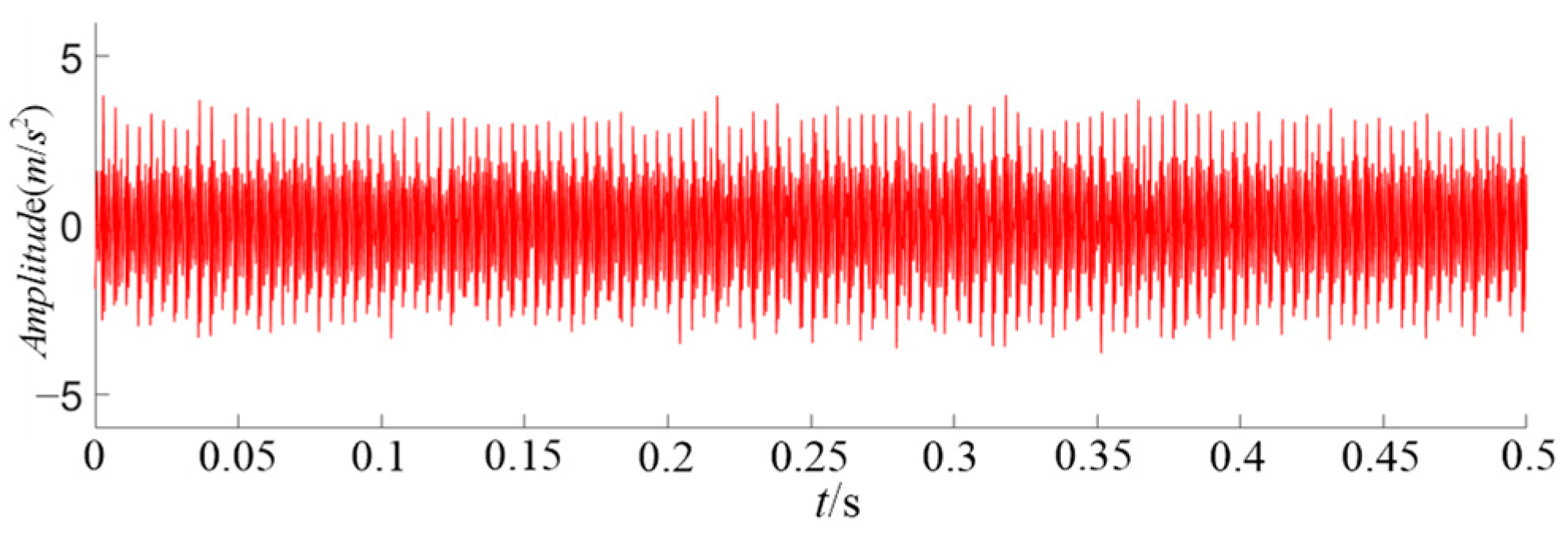



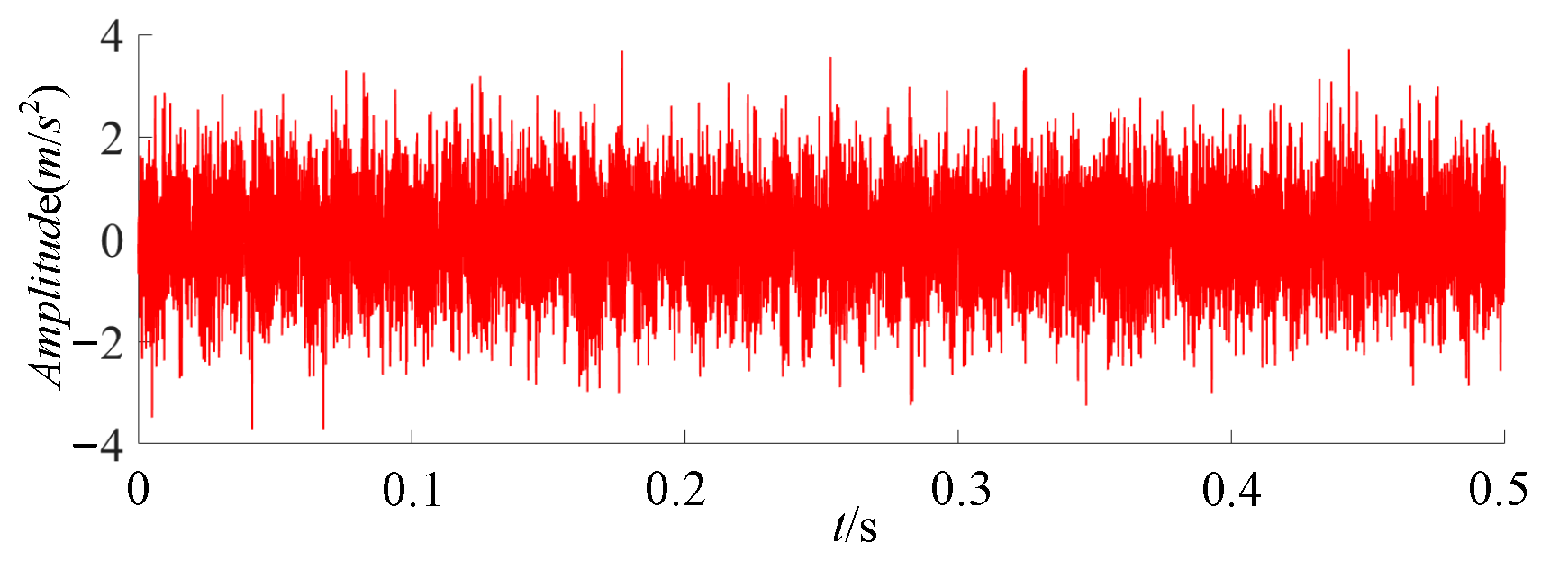

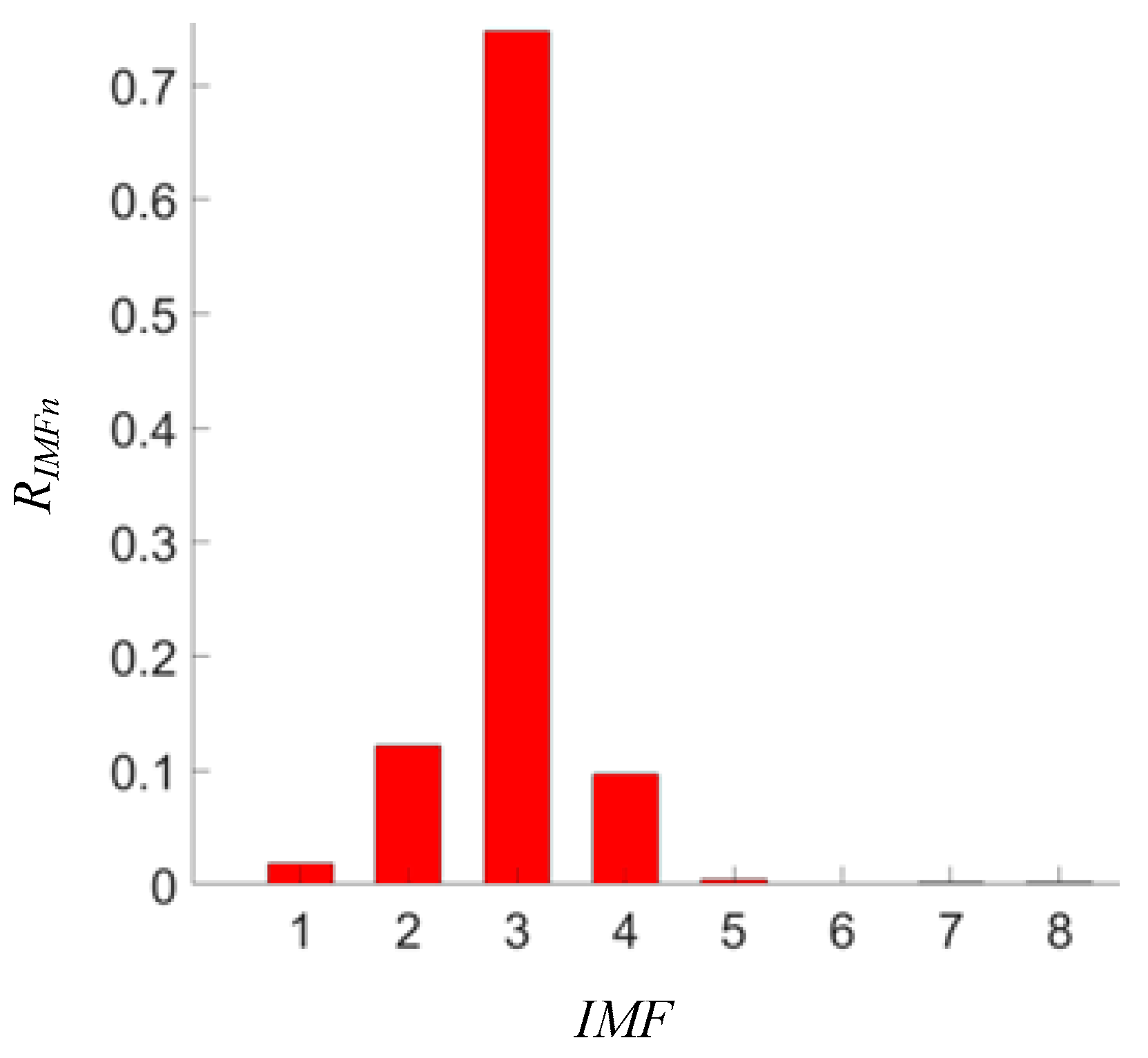

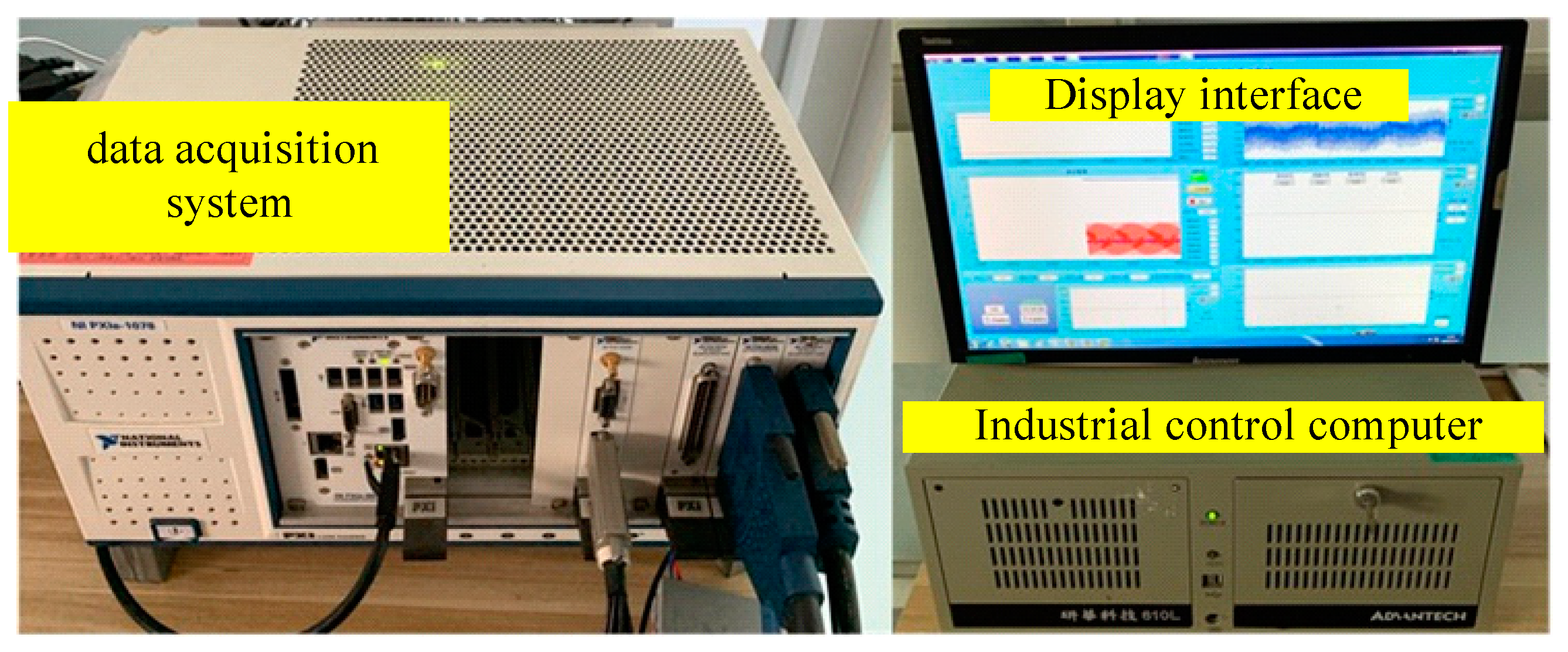



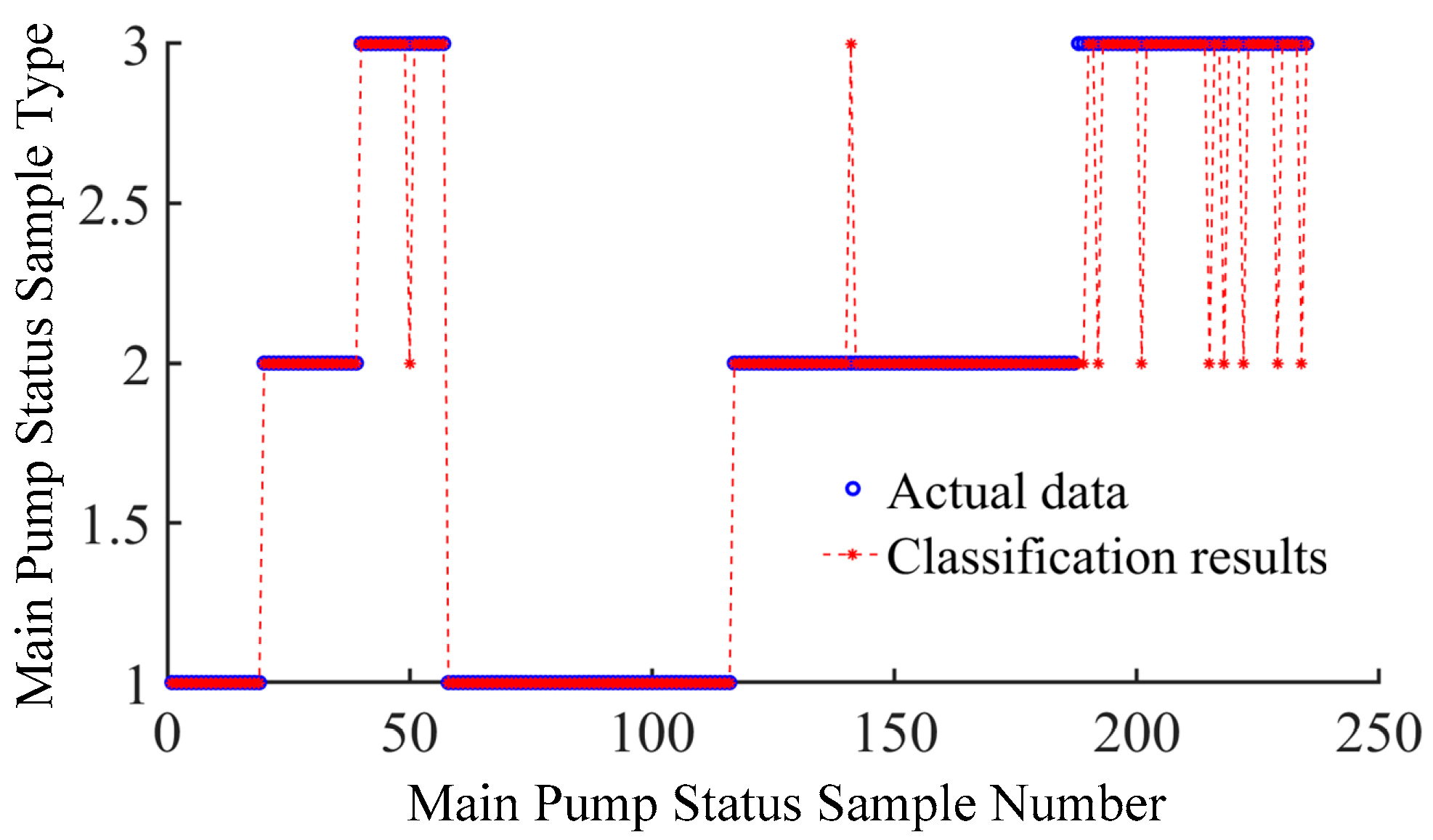

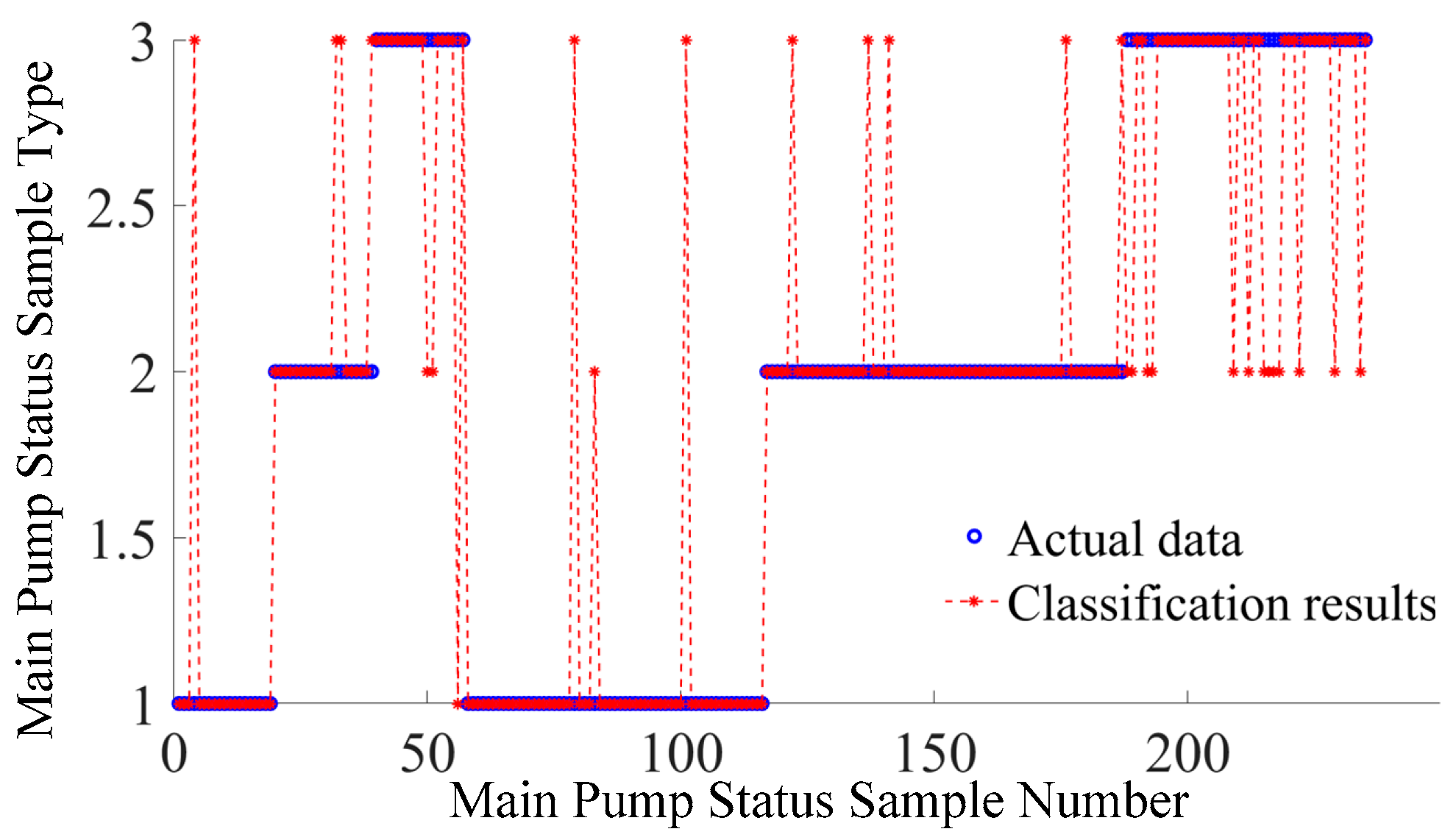
| Data Sample Type | Number of Samples | Number of Training Samples | Number of Test Samples | Sample Label |
|---|---|---|---|---|
| Main pump in normal state | 119 | 41 | 78 | 1 |
| Abnormal state of blade | 193 | 51 | 91 | 2 |
| Abnormal state of rotor system | 111 | 45 | 66 | 3 |
| Method | Total Number of Samples Not Correctly Identified | Number of State 1 Not Correctly Identified | Number of State 2 Not Correctly Identified | Number of State 3 Not Correctly Identified | Recognition Accuracy | Number of Iterations |
|---|---|---|---|---|---|---|
| EEMD-OQGA-SVM | 11 | 0 | 1 | 10 | 95.31 | 13 |
| EEMD-QGA-SVM | 12 | 0 | 1 | 11 | 94.89 | 33 |
| EEMD-SVM | 28 | 2 | 6 | 20 | 88.01 | / |
Disclaimer/Publisher’s Note: The statements, opinions and data contained in all publications are solely those of the individual author(s) and contributor(s) and not of MDPI and/or the editor(s). MDPI and/or the editor(s) disclaim responsibility for any injury to people or property resulting from any ideas, methods, instructions or products referred to in the content. |
© 2023 by the authors. Licensee MDPI, Basel, Switzerland. This article is an open access article distributed under the terms and conditions of the Creative Commons Attribution (CC BY) license (https://creativecommons.org/licenses/by/4.0/).
Share and Cite
Liu, Z.; Li, M.; Zhu, Z.; Xiao, L.; Nie, C.; Tang, Z. Health State Identification Method of Nuclear Power Main Circulating Pump Based on EEMD and OQGA-SVM. Electronics 2023, 12, 410. https://doi.org/10.3390/electronics12020410
Liu Z, Li M, Zhu Z, Xiao L, Nie C, Tang Z. Health State Identification Method of Nuclear Power Main Circulating Pump Based on EEMD and OQGA-SVM. Electronics. 2023; 12(2):410. https://doi.org/10.3390/electronics12020410
Chicago/Turabian StyleLiu, Zhilong, Minggang Li, Zhifeng Zhu, Linhai Xiao, Changhua Nie, and Zhangchun Tang. 2023. "Health State Identification Method of Nuclear Power Main Circulating Pump Based on EEMD and OQGA-SVM" Electronics 12, no. 2: 410. https://doi.org/10.3390/electronics12020410
APA StyleLiu, Z., Li, M., Zhu, Z., Xiao, L., Nie, C., & Tang, Z. (2023). Health State Identification Method of Nuclear Power Main Circulating Pump Based on EEMD and OQGA-SVM. Electronics, 12(2), 410. https://doi.org/10.3390/electronics12020410







